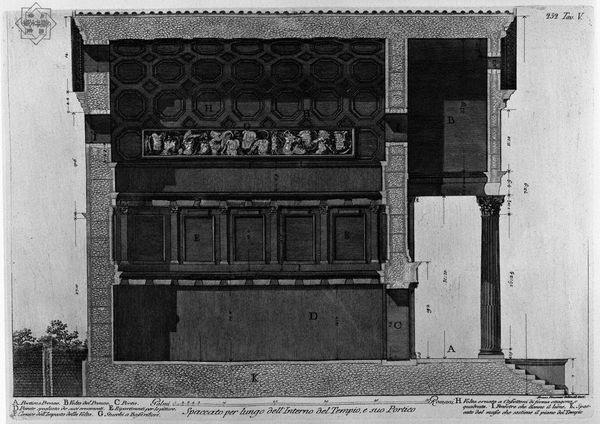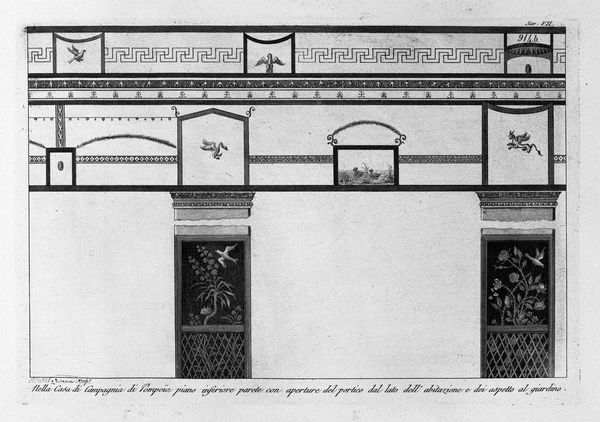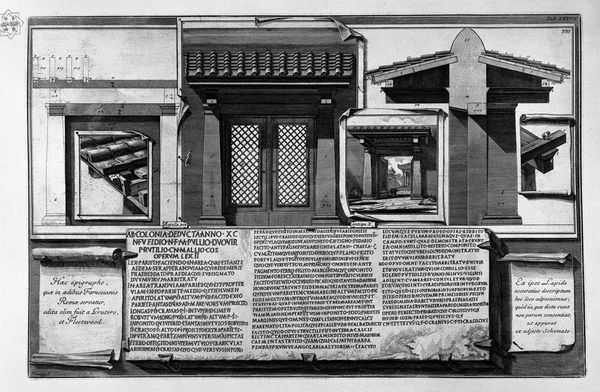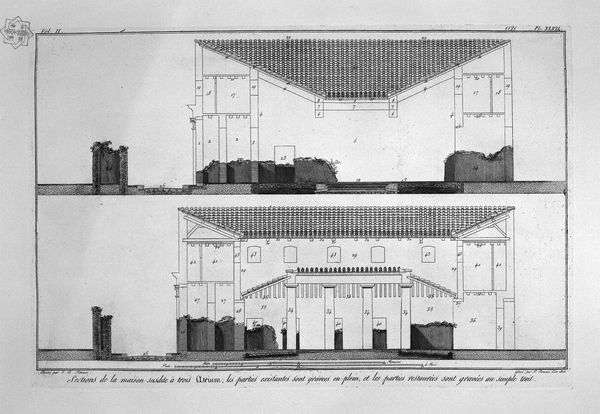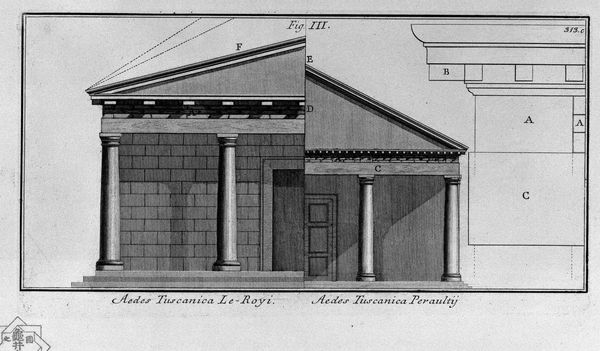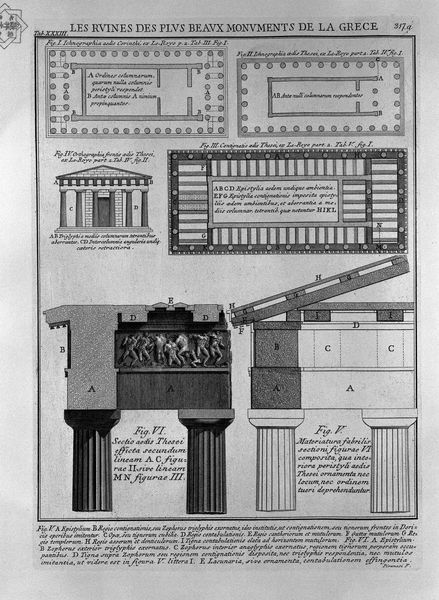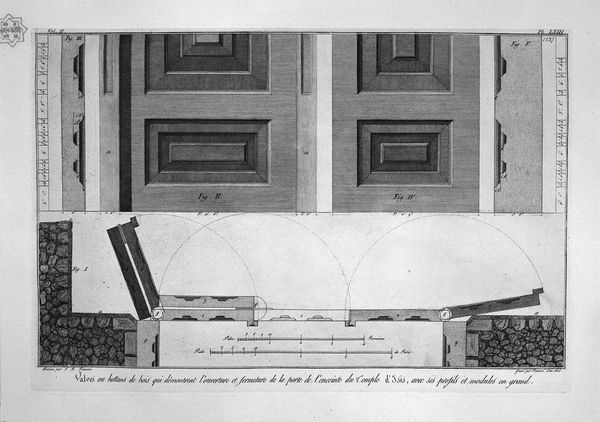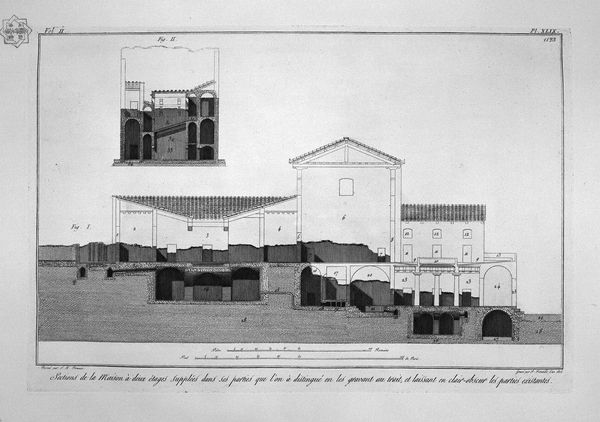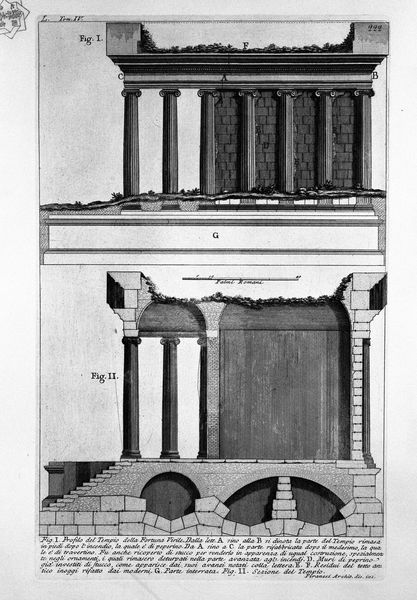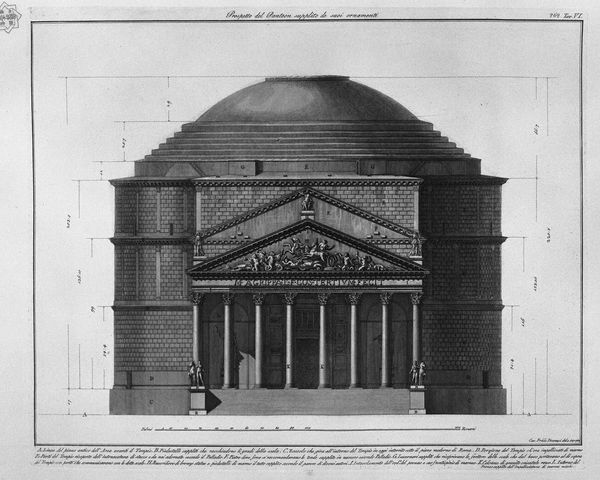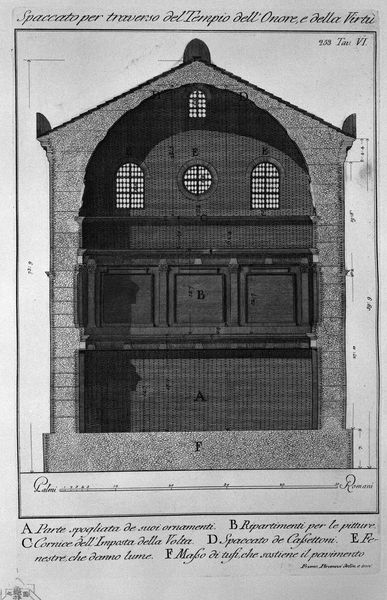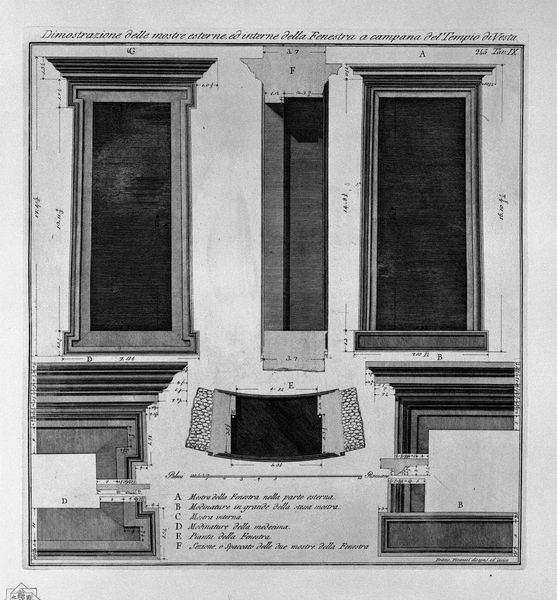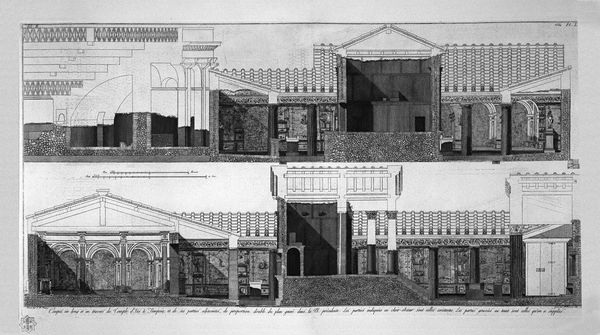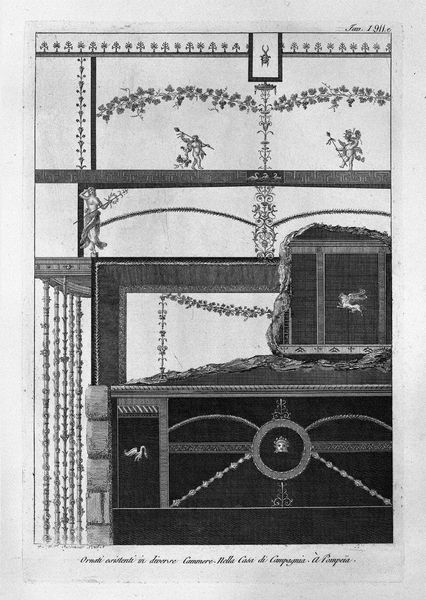
drawing, print, architecture
#
drawing
#
neoclacissism
# print
#
architectural form
#
line
#
architectural proposal
#
architecture
#
building
#
monochrome
Copyright: Public domain
Editor: Here we have Giovanni Battista Piranesi's print, "Side of the Temple of Honor and Virtue." The detailed linework depicting the architecture really struck me. How do you see this piece, from your perspective? Curator: Well, I see a meticulously crafted image that reveals as much about 18th-century printmaking as it does about neoclassical architectural ideals. Consider the labour involved in producing those intricate lines. It represents a significant investment of time and skill. This challenges the traditional idea of artistic "genius," focusing instead on production. Editor: That's an interesting point. It definitely speaks to the industrialization of art in some ways. So you're saying the medium is the message here, literally? Curator: In a way, yes. But it also draws attention to the social context in which it was created. Architecture was seen not just as functional, but as symbolic of power and order, yet Piranesi democratizes it. By making affordable prints, more people could access these grand designs, promoting these ideas and architectural aesthetics as symbols. Do you see anything in how materials or method challenge traditional "high art?" Editor: Yes, by making these prints reproducible, this undermines the preciousness associated with unique artworks. Curator: Precisely. By creating these reproducible images, what results are their distribution which in turns challenges ideas about uniqueness and consumption in the art world, wouldn’t you agree? Editor: Yes, I’m getting a completely different view of what it is to appreciate the work through this method, materials, and context now. Thanks! Curator: And I understand better how Piranesi leveraged printmaking for architectural dissemination.
Comments
No comments
Be the first to comment and join the conversation on the ultimate creative platform.
